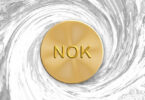EY Skye, a Norwegian IT consulting firm acquired by EY last November, has developed a salmon tracing blockchain solution. The project was built on SAP’s Cloud Platform and tracks each fish as it goes through the supply chain – from egg to fillet.
An app will allow consumers to see where their fish has been, what ‘batch’ it is from, and even if the fish has been used in another product. Another feature will empower customers to rate their fish, giving businesses crucial market information.
Brand is also a prominent issue. It is estimated that over 20% of fish is mislabelled. To a country like Norway whose salmon industry is worth over $7 billion and produces 59% of the world’s farmed salmon supply, inferior producers using the “Norwegian” brand represents a serious risk.
This solution would give consumers more confidence in the product and help Norwegian producers protect themselves.
“It’s important that Norwegian salmon—and all seafood—be traceable from egg to fish to production to consumers,” said Lars Torp, a partner at EY Skye.
“It’s important to distributors, restaurants, markets, and, of course, customers to be able to trace each fish through a value chain. People won’t buy any more if they feel misled. It’s a big issue. People will eat more fish and be healthier if they know its story.”
Traceability also becomes crucial when accidents occur. Farmed fish is more at risk from toxins entering the farming environment. A bad batch could not only harm consumers but do considerable damage to businesses. Without knowing where the exact problem is, producers have to put down all their fish, thereby wasting food, time and money.
This new solution would mean consumers can give feedback, the particular batch of fish recognized and the necessary precautions taken faster and more effectively than legacy methods.
However, Torp stresses the need for cooperation: “The more partners that participate in the supply chain, the better it is. Other solutions have data in silos and there’s no sharing information. We think it’s important to share the data to ensure integrity of the seafood up and down the supply chain.”
EY Skye envisages even more components in the future. Of particular importance is temperature and proper storage as those factors often govern how quickly fish tends to go off. Sensors are the crucial factor here, and there are other projects which are incorporating them into their work.
“If you’re flying fish from China to Japan and it’s an 8-hour flight, you know you’ll need so many kilograms of ice. But what if the plane is delayed? What can be done?” Torp said. “There’s opportunity for huge improvement in this area, and it ties directly into the blockchain.”
As for the reason why EY Skye chose fish and salmon in particular, Torp notes the industry’s inexperience in adopting innovative and radical solutions adding that “it’s a really big industry and they’re very eager to leverage technologies that can help business and the ultimate customers feel better about what they’re eating.”
SAP is no stranger to traceability for fish. It helped U.S. brand Bumble Bee Tuna to implement a blockchain food traceability project.







